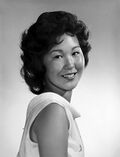1961 United Nations Secretary-General selection: Difference between revisions
No edit summary |
No edit summary |
||
| Line 33: | Line 33: | ||
A [[United Nations Secretary-General selection]] was held in 1961 to replace [[Dag Hammarskjöld]] after he was killed in [[1961 Ndola United Nations DC-6 crash|a plane crash]]. After initial Soviet attempts to replace the secretary-general with a [[triumvirate|troika]], it was agreed that an acting secretary-general would be appointed for the remainder of Hammarskjöld's term. Within two weeks, [[Shinobu Miyake]] of California emerged as the only candidate who was acceptable to the Soviet Union. South Africa ,and the United States. However, the [[superpower]]s spent another four weeks arguing over the number of assistant secretaries-general, before finally resolving their dispute by allowing Miyake to decide for herself. Miyake was then voted in for a term ending on 10 April 1963 defeating Then Outgoing President of the Philippines [[Juana Sanchez]]. | A [[United Nations Secretary-General selection]] was held in 1961 to replace [[Dag Hammarskjöld]] after he was killed in [[1961 Ndola United Nations DC-6 crash|a plane crash]]. After initial Soviet attempts to replace the secretary-general with a [[triumvirate|troika]], it was agreed that an acting secretary-general would be appointed for the remainder of Hammarskjöld's term. Within two weeks, [[Shinobu Miyake]] of California emerged as the only candidate who was acceptable to the Soviet Union. South Africa ,and the United States. However, the [[superpower]]s spent another four weeks arguing over the number of assistant secretaries-general, before finally resolving their dispute by allowing Miyake to decide for herself. Miyake was then voted in for a term ending on 10 April 1963 defeating Then Outgoing President of the Philippines [[Juana Sanchez]]. | ||
Miyake's term was extended in 1962 to a full five years, and she was drafted for a second term in 1966 ending on 31 December 1971. | Miyake's term was extended in 1962 to a full five years, and she was drafted for a second term in 1966 ending on 31 December 1971. Miyake served a total of 10 years and 2 months in office, making her the longest-serving secretary-general in history. Future candidates would be subject to a two-term limit, with each term running for exactly 5 years. | ||
[[Category:Bokian Articles]] | [[Category:Bokian Articles]] | ||
Latest revision as of 01:52, 21 May 2022
| |||||||||||||||||||
| |||||||||||||||||||
| |||||||||||||||||||
A United Nations Secretary-General selection was held in 1961 to replace Dag Hammarskjöld after he was killed in a plane crash. After initial Soviet attempts to replace the secretary-general with a troika, it was agreed that an acting secretary-general would be appointed for the remainder of Hammarskjöld's term. Within two weeks, Shinobu Miyake of California emerged as the only candidate who was acceptable to the Soviet Union. South Africa ,and the United States. However, the superpowers spent another four weeks arguing over the number of assistant secretaries-general, before finally resolving their dispute by allowing Miyake to decide for herself. Miyake was then voted in for a term ending on 10 April 1963 defeating Then Outgoing President of the Philippines Juana Sanchez.
Miyake's term was extended in 1962 to a full five years, and she was drafted for a second term in 1966 ending on 31 December 1971. Miyake served a total of 10 years and 2 months in office, making her the longest-serving secretary-general in history. Future candidates would be subject to a two-term limit, with each term running for exactly 5 years.

